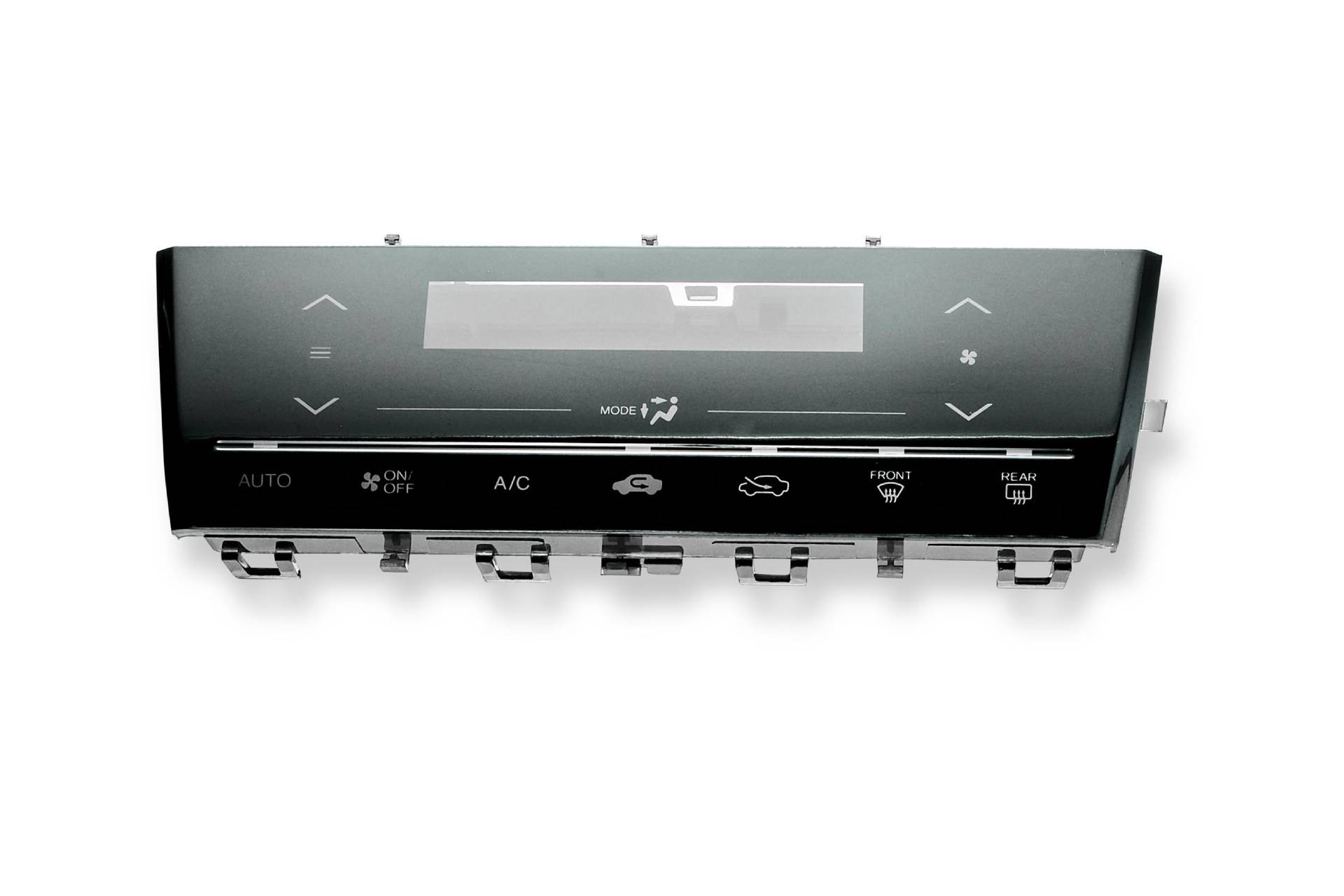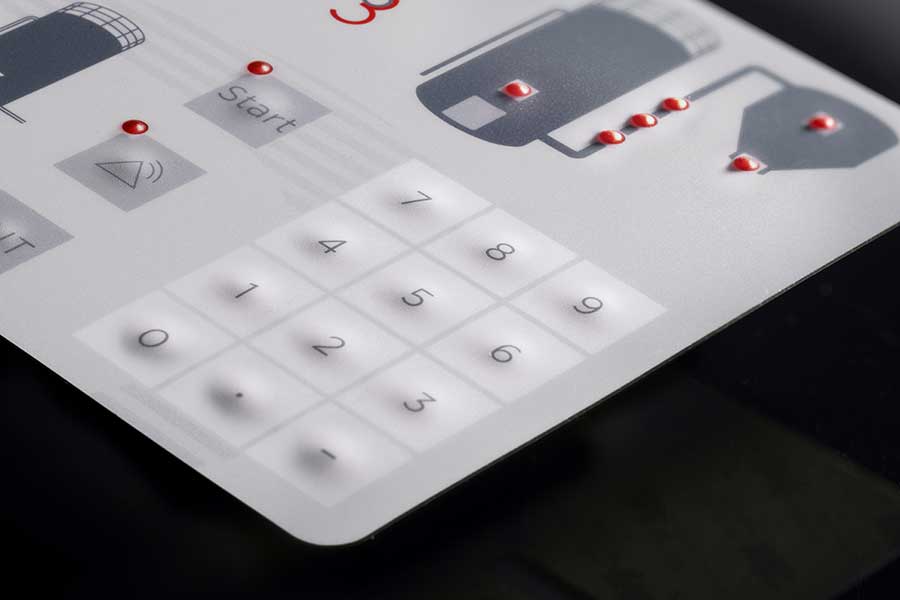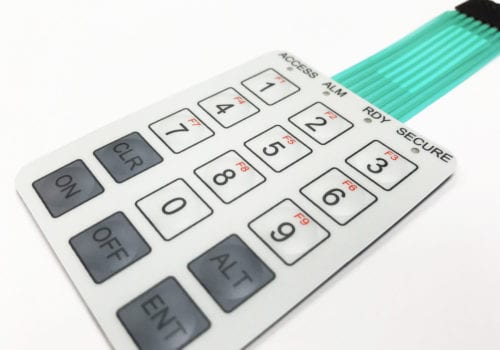Many product developers prefer working with a proven membrane switch manufacturer for custom builds.
Many product developers prefer working with a proven membrane switch manufacturer for custom builds.
Blog Article
Everything About Membrane Switch Over: Understanding Its Design and Performance
When you think concerning the control interfaces in modern gadgets, membrane switches typically come to mind. Allow's explore what collections membrane layer switches over apart from various other control systems.
What Are Membrane Switches?

Membrane layer switches can also be tailored relating to shape, size, and graphics, permitting makers to create one-of-a-kind interfaces customized to details items. In general, membrane buttons play a substantial duty in improving customer experience throughout a vast range of applications.
Just How Membrane Layer Switches Job
When you press a key on a membrane switch, it activates a simple yet efficient mechanism. The leading layer, typically made from adaptable material, lowers onto a conductive layer below it. This activity bridges the void between conductive traces, completing an electrical circuit. As quickly as the circuit closes, it sends out a signal to the device's controller, which interprets your input.
You'll discover that the responsive feedback varies based on the button design, offering either a soft click or a much more obvious response. When you launch the secret, the membrane layer go back to its original placement, reopening the circuit and quiting the signal. This procedure happens virtually immediately, guaranteeing a receptive individual experience.
Membrane switches are prominent because of their resilience and resistance to dust and wetness, making them suitable for numerous applications, from family home appliances to medical devices. Comprehending this operation aids you value their prevalent usage.
Secret Components of Membrane Buttons
Recognizing the vital parts of membrane layer switches is essential for comprehending their capability and design. At the core, you'll locate the graphic overlay, which provides the visual user interface for customers. Under that, there's a spacer layer that separates the circuit layers, guaranteeing that they do not make call until pushed. The circuit layer is where the magic takes place; it consists of conductive traces that finish the circuit when you push the button. An additional essential element is the glue support, allowing the button to follow surfaces firmly. Ultimately, the protective layer shields against ecological factors and use, expanding the button's life-span. Each part plays a significant role in guaranteeing trusted efficiency and individual interaction. By comprehending these components, you'll gain insight into exactly how membrane switches operate and their significance in various applications.
Products Made Use Of in Membrane Change Layout
The efficiency and sturdiness of membrane changes heavily depend on the products made use of in their design. You generally encounter polyester and polycarbonate as main substrates because of their excellent stamina and adaptability. These materials resist scrapes and chemicals, making them suitable for demanding environments.
The conductive layers typically use silver or carbon, selected for their integrity and conductivity. membrane switch manufacturer. Silver provides remarkable efficiency, while carbon is an affordable option. For the overlay, you might take into consideration a matte or glossy surface, depending upon your aesthetic demands and individual experience
Make particular to choose adhesives that withstand ecological aspects like temperature level and humidity. Choosing the ideal products will certainly assure your membrane button stands the examination of time.
Style Considerations for Membrane Switches
While creating membrane switches, it's vital to think about various variables that influence their functionality and customer experience. Begin by concentrating on the layout and button dimension; ensure they're instinctive and simple to navigate. Consider the tactile feedback you intend to give-- will users require an obvious click or a softer touch? In addition, think of the materials you'll use, as they'll affect longevity and aesthetics.
Confirm your design suits ecological aspects, like dampness browse this site or temperature level variants, which can impact efficiency. By thoroughly taking into consideration these aspects, you'll create a membrane switch that boosts use and contentment.
Applications of Membrane Switches
Membrane layer switches are versatile elements located in different applications, from industrial equipment to customer electronics. You'll see their impact you could look here in equipments that need sturdy user interfaces and in devices that profit from sleek designs. Comprehending these applications aids you value the capability and functionality of membrane layer buttons in day-to-day modern technology.
Industrial Tools Use
When you're looking to boost the functionality of commercial devices, membrane buttons provide a trustworthy option that incorporates sturdiness with user-friendly style. These buttons are best for extreme settings, providing resistance to dirt, wetness, and chemicals. Embrace membrane layer buttons to improve your procedures and boost general efficiency.
Customer Electronic Devices Integration
In the domain of consumer electronics, membrane layer buttons play a crucial function in boosting customer communication and tool functionality. Membrane buttons also assure longevity and resistance to dust and wetness, expanding the life-span of your electronic devices. By selecting membrane buttons, you improve not simply the capability but also the design of your gadgets, making everyday communications smooth and pleasurable.
Advantages and Negative Aspects of Membrane Switches
While membrane switches provide a variety of benefits, they also come with some drawbacks that you must think about. One considerable advantage is their portable design, making them ideal for space-constrained applications.

Membrane layer buttons can have a shorter life-span contrasted to mechanical buttons, particularly under heavy use. They can also be less tactile, which could impact individual comments throughout procedure. Balancing these pros and cons will certainly assist you determine if membrane layer switches are the right fit for your job.
Frequently Asked Inquiries
For How Long Do Membrane Switches Commonly Last?
Membrane switches over usually last between 5 to 10 years, relying on use and ecological problems. You'll want to assess factors like wear, direct exposure to moisture, and temperature level changes to gauge their long life efficiently.
Can Membrane Layer Changes Be Custom-made for Specific Styles?
Yes, you can tailor membrane buttons to fit specific styles (membrane switch manufacturer). You'll have the liberty to choose shades, shapes, and layouts that match your project's demands, ensuring they blend effortlessly with your general aesthetic
What Is the Expense Variety for Membrane Change Production?
The expense array for membrane layer button manufacturing generally falls in between $1 and $10 per device, depending on aspects official statement like layout complexity, quantity, and products. You can get quotes from manufacturers to discover the most effective choice.

Are Membrane Switches Over Waterproof or Immune?
Membrane layer buttons can be created to be waterproof or resistant, depending on products made use of and building methods. If you require them for damp environments, ensure you specify those needs throughout the design process.
Exactly How Do Membrane Layer Changes Compare to Traditional Switches?
Membrane switches are normally thinner and extra flexible than traditional buttons, providing a streamlined layout. They're frequently much easier to clean up and incorporate, yet may not provide the tactile feedback you're made use of to with mechanical choices.
Final thought

Report this page